
ENVIRONMENTAL SCIENCE & TECHNOLOGY
Scope & Guideline
Pioneering the intersection of science and technology for a greener future.
Introduction
Aims and Scopes
- Environmental Chemistry and Toxicology:
Research on the chemical composition, behavior, and toxicological effects of environmental pollutants, including persistent organic pollutants (POPs), heavy metals, and emerging contaminants like PFAS. - Water Treatment and Management:
Studies related to innovative methods for water purification, wastewater treatment technologies, and the assessment of chemical contaminants in water resources. - Air Quality and Atmospheric Science:
Investigations into atmospheric chemistry, including the formation and impact of secondary organic aerosols, gas-phase reactions, and the sources and effects of airborne pollutants. - Soil and Sediment Contamination:
Research focused on the understanding of soil and sediment contamination dynamics, including the bioavailability of pollutants and their impacts on ecosystems. - Sustainable Resource Management:
Exploration of sustainable practices in waste management, recycling, and the circular economy, emphasizing the recovery of valuable materials from waste streams. - Climate Change and Environmental Justice:
Analysis of the impacts of climate change on ecosystems and human health, along with studies addressing environmental justice and equity in environmental policy. - Microbial Ecology and Bioremediation:
Research on microbial processes in environmental contexts, including the use of microbes for bioremediation and the interactions between microorganisms and pollutants.
Trending and Emerging
- Per- and Polyfluoroalkyl Substances (PFAS) Research:
There is a significant increase in studies investigating the sources, effects, and remediation of PFAS, emphasizing the urgent need to address these persistent pollutants in various ecosystems. - Microplastics and Their Environmental Impact:
Research on microplastics is rapidly growing, focusing on their sources, transport mechanisms, and ecological effects, highlighting the need for solutions to mitigate their impact on the environment. - Innovative Water Treatment Technologies:
Emerging studies emphasize novel water treatment technologies, including electrochemical processes and advanced oxidation, to effectively remove contaminants from water sources. - Machine Learning and Data Science Applications:
The integration of machine learning and data science in environmental research is on the rise, facilitating more accurate predictions, data analysis, and management strategies. - Climate Change Mitigation Strategies:
Research is increasingly focused on strategies for mitigating climate change, including carbon capture technologies, sustainable agriculture, and the assessment of greenhouse gas emissions. - Health Impacts of Environmental Exposures:
Growing attention is being paid to the health impacts of environmental pollutants, particularly in vulnerable populations, linking environmental science with public health. - Ecosystem Services and Biodiversity Conservation:
There is an emerging trend towards understanding the role of ecosystem services in conservation efforts and their importance for sustainable development and human well-being.
Declining or Waning
- Traditional Environmental Monitoring:
There is a noticeable decline in studies focused solely on traditional environmental monitoring techniques, as the field shifts toward more innovative, integrated approaches utilizing advanced technologies like machine learning and remote sensing. - Chemical Engineering Approaches:
Research that primarily emphasizes traditional chemical engineering methods without incorporating sustainability or environmental impact assessments has seen reduced publication rates, as the journal increasingly prioritizes holistic and sustainable solutions. - Conventional Waste Management Practices:
The focus on conventional waste management strategies, such as landfilling and incineration, is diminishing in favor of more sustainable practices, including resource recovery and circular economy principles. - Basic Ecological Studies:
Basic ecological studies without direct relevance to environmental technology or policy implications are appearing less frequently, reflecting a shift towards applied research with immediate societal benefits.
Similar Journals
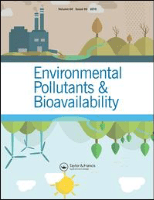
Environmental Pollutants and Bioavailability
Advancing Research on Pollutants and BioavailabilityEnvironmental Pollutants and Bioavailability, published by Taylor & Francis Ltd, serves as a critical platform for disseminating high-quality research focused on the interactions between environmental contaminants and biological systems. Since its inception as an Open Access journal in 2019, it has rapidly gained recognition within the scientific community, achieving a commendable Q2 ranking in multiple categories including Chemical Health and Safety, Health, Toxicology and Mutagenesis, and Toxicology for the year 2023. The journal aims to bridge the gap between environmental science and public health by exploring innovative methodologies, risk assessments, and bioavailability studies related to pollutants. Located in the United Kingdom, Environmental Pollutants and Bioavailability is positioned to impact ongoing discourse and research practices in the fields of toxicology and environmental safety, making it an invaluable resource for researchers, professionals, and students dedicated to advancing knowledge in these critical areas.
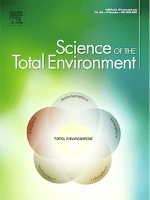
Science of The Total Environment
Transforming Environmental Challenges into OpportunitiesScience of The Total Environment, an esteemed journal published by Elsevier, holds a significant position in the field of environmental science, encompassing critical areas such as Environmental Chemistry, Environmental Engineering, Pollution, and Waste Management and Disposal. With an impressive impact factor and ranked in the Q1 quartile across its categories for 2023, the journal is recognized for its high-quality research output and contribution to environmental sustainability. Operating from its base in the Netherlands, the journal has been a valuable resource since its inception in 1972, welcoming innovative studies that address complex environmental challenges. Its notable rankings—such as Rank #9 in both Environmental Sciences and Pollution—underscore its relevance and influence in the academic community. Although the journal currently does not provide an open access option, the robust findings and discussions presented within its pages continue to foster a deeper understanding of environmental issues. Science of The Total Environment is an essential platform for researchers, professionals, and students dedicated to advancing knowledge and solutions in the rapidly evolving field of environmental science.
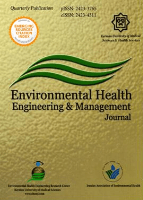
Environmental Health Engineering and Management Journal
Connecting Science and Public Health for a Better TomorrowEnvironmental Health Engineering and Management Journal is a premier platform dedicated to the dissemination of research findings in the essential field of environmental health. Published by Kerman University of Medical Sciences in Iran, this Open Access journal has been a beacon of scientific inquiry since its inception in 2014. With an ISSN of 2423-3765 and E-ISSN 2423-4311, it facilitates broad accessibility to cutting-edge research that addresses the complex interactions between environmental factors and human health. With a notable categorization in the Q3 quartile for Environmental Science and Public Health, alongside Q4 in Chemical Health and Safety, the journal underscores its commitment to quality and relevance. Currently ranked #132 out of 233 in Environmental Science within Scopus, it serves as a crucial resource for researchers and practitioners striving to tackle contemporary environmental challenges. The journal's scope includes innovative methodologies, environmental risk assessment, and sustainable health practices, positioning it as an indispensable reference for those invested in improving public health outcomes through environmental engineering and management.

Environmental Science-Water Research & Technology
Leading the charge in global water sustainability.Environmental Science-Water Research & Technology is a premier journal published by the Royal Society of Chemistry that focuses on the latest research and technological advancements in the field of water science and engineering. Since its inception in 2015, the journal has steadily gained recognition for its rigorous peer-review process and commitment to advancing our understanding of fresh, wastewater treatment, and sustainable water management. With a remarkable 2023 impact factor and consistently achieving Q1 status in both Environmental Engineering and Water Science and Technology categories, this journal ranks within the top percentile of its field, underscoring its pivotal role in fostering innovative solutions to global water challenges. Currently listed as Rank #26/261 in Water Science and Technology and Rank #34/197 in Environmental Engineering by Scopus, it provides an essential platform for researchers, professionals, and students alike. The journal embraces a broad spectrum of topics concerning water research, aiming to bridge the gap between scientific understanding and practical application.

Soil and Water Research
Transforming Knowledge into Action for Environmental StewardshipSoil and Water Research, an esteemed journal published by the Czech Academy Agricultural Sciences, is dedicated to advancing the fields of Aquatic Science and Soil Science. With a strong commitment to open access since 2006, this journal facilitates the dissemination of high-quality research and fosters global collaboration among researchers, professionals, and students. Operating from the vibrant academic hub of Prague, Czech Republic, it serves as a key resource for those interested in pressing environmental and agricultural challenges. Featuring a robust H-index and ranking in the Q2 category for both Aquatic Science and Soil Science as of 2023, Soil and Water Research occupies a prominent position in Scopus, ensuring that published works reach a wide audience. The journal invites contributions that explore innovative methodologies and provide insights into soil and water management practices, thus playing a critical role in addressing sustainability issues within these interconnected domains. As researchers navigate the complexities of climate change and resource management, Soil and Water Research stands out as a vital tool for informed decision-making and impactful research.
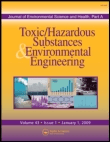
JOURNAL OF ENVIRONMENTAL SCIENCE AND HEALTH PART A-TOXIC/HAZARDOUS SUBSTANCES & ENVIRONMENTAL ENGINEERING
Advancing knowledge at the intersection of health and environment.JOURNAL OF ENVIRONMENTAL SCIENCE AND HEALTH PART A-TOXIC/HAZARDOUS SUBSTANCES & ENVIRONMENTAL ENGINEERING, published by TAYLOR & FRANCIS INC, stands at the forefront of research in the dynamic fields of environmental science and public health. With an ISSN of 1093-4529 and an E-ISSN of 1532-4117, this journal serves as a pivotal platform for disseminating significant findings regarding toxic substances and their impact on the environment and human health. It is categorized in the Q3 quartile for both Environmental Engineering and Medicine in 2023, showcasing its relevance within these disciplines. Researchers will find valuable insights in the 90th rank among 197 in the Environmental Science and Engineering category, placing it in the 54th percentile among its peers. While access options remain traditional rather than open-access, the journal is dedicated to serving as an essential resource for professionals and academics engaged in understanding the intricate connections between hazardous materials and environmental safety. The journal has consistently published critical research since its inception in 1978 and is committed to advancing knowledge up to 2024, making it a crucial venue for ongoing discussions and developments in environmental health.
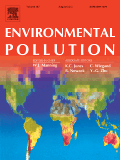
ENVIRONMENTAL POLLUTION
Illuminating the path to environmental health and safety.Environmental Pollution, published by Elsevier Science Ltd, stands at the forefront of research related to environmental contaminants and their effects on health and ecosystems. With an impressive impact factor reflected in its Q1 rankings across various categories including Health, Toxicology, and Pollution, this journal is a pivotal resource for academics and professionals in the fields of environmental science and toxicology. The journal, established in 1973, continues to disseminate high-quality articles that explore the implications of pollution and advance knowledge on toxicological impacts and mitigation strategies. Although it is not an open-access journal, it offers robust visibility within the scientific community, ensuring vital research reaches those who need it most. Researchers, students, and professionals dedicated to understanding and addressing the challenges of environmental pollution will find Environmental Pollution to be an indispensable platform for their work, guiding the ongoing dialogue on sustainable practices and public health protection.

JOURNAL OF SOILS AND SEDIMENTS
Exploring the Foundations of Earth SciencesJOURNAL OF SOILS AND SEDIMENTS, published by SPRINGER HEIDELBERG, stands as a premier interdisciplinary platform dedicated to advancing the understanding of soil and sediment dynamics within the broader context of Earth sciences. With an impressive impact factor and a Q1 ranking in both Earth-Surface Processes and Stratigraphy, this journal not only reflects the high quality of research but also contributes significantly to the dialogue amongst researchers, professionals, and students in the field. The journal encompasses a wide spectrum of topics from sedimentology to soil science, making it essential reading for those involved in environmental management, agriculture, and geology. Access options are available to ensure that cutting-edge research is accessible to a global audience, reflecting the journal's commitment to fostering collaboration and innovation. As we converge towards 2024, JOURNAL OF SOILS AND SEDIMENTS aims to continue its role in shaping scientific inquiry and policy formulation concerning the vital roles of soils and sediments in ecological and geological systems.
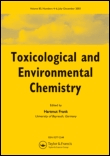
TOXICOLOGICAL AND ENVIRONMENTAL CHEMISTRY
Advancing knowledge at the crossroads of chemistry and health.TOXICOLOGICAL AND ENVIRONMENTAL CHEMISTRY is a pivotal journal published by Taylor & Francis Ltd, addressing critical intersections between environmental chemistry and toxicology since its inception in 1979. With its ISSN 0277-2248 and E-ISSN 1029-0486, the journal serves as a platform for rigorous research and innovative methodologies in pollution control, health implications of environmental chemicals, and the broader spectrum of toxicological studies. Although it currently does not offer open access, the journal's impact in the field is underscored by its Category Quartiles rankings in 2023, placing it in Q3 across Environmental Chemistry, Health, Toxicology and Mutagenesis, and Pollution categories. Furthermore, its Scopus rankings reveal its significant role within the scientific community, specifically in areas such as Environmental Science and Toxicology. The journal aspires to foster multidisciplinary dialogue and advance knowledge that contributes to environmental sustainability and public health, making it an essential resource for researchers, professionals, and students dedicated to these fields.

Journal of Environmental Health Science and Engineering
Advancing the frontiers of environmental health and engineering.Journal of Environmental Health Science and Engineering, published by Springer, stands at the forefront of scholarly research in environmental health and engineering. With an impressive E-ISSN of 2052-336X and a significant impact factor reflected in its Q2 quartile rankings across various essential categories—including Applied Microbiology, Environmental Engineering, and Public Health—the journal serves as a vital platform for disseminating high-quality research from 2012 to 2024. Its rankings in fields such as Environmental Science and Waste Management position it as a distinguished resource for professionals and academics aiming to advance their understanding of contemporary environmental challenges. As an open-access journal based in Switzerland, it champions accessibility and collaboration, allowing researchers to share insights that influence policy and practical applications in environmental health. The journal's commitment to fostering innovative research makes it indispensable for those dedicated to enhancing the intersection of environmental science and public health.